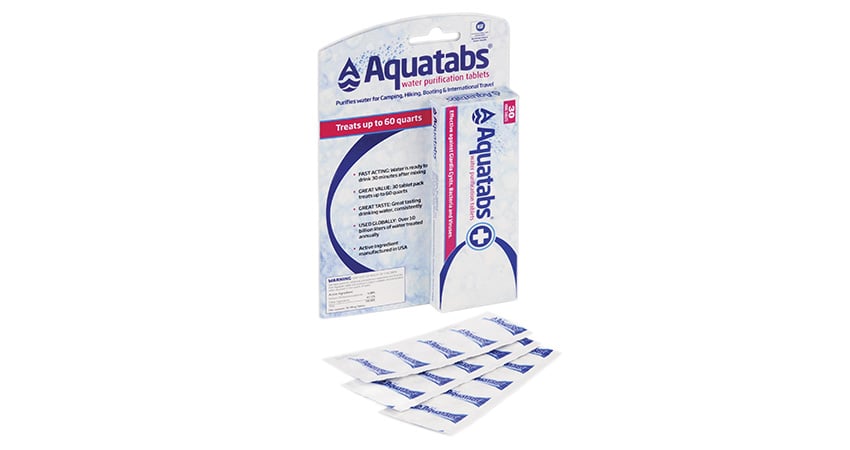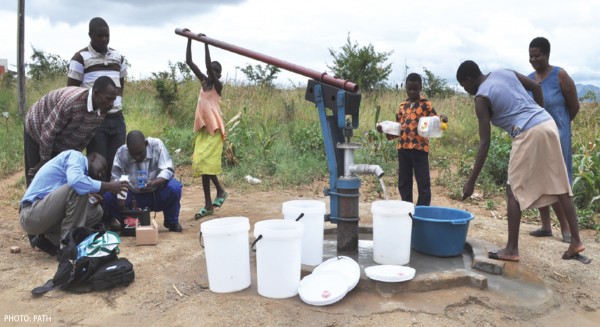Water 101: Safe Water Treatment Solutions for International Travelers
Whether you’re planning a backcountry trip or an urban adventure abroad—say, an Annapurna Circuit trek in Nepal, or a cultural tour of its capital, Kathmandu—you’ll want to take extra precautions with your drinking water. In many developing countries, both municipal drinking water and backcountry water are prone to viruses in addition to bacteria and protozoa. Bringing a water purification system with you is a smart way to help protect you from viral infections that can jeopardize your health, not to mention ruin your vacation.
There are a few water treatment options available to you that target different qualities of water. A general rule when treating water is to start with the clearest water possible, but sometimes your options are limited. Here’s what you should know about treating water when traveling in other countries:
Treating municipal water supplies (clear water)
In many developing cities, you may encounter tap or well water that appears clear, but don’t be fooled—clear does not necessarily mean clean. There still may be pathogens or other contaminants in the water. Rather than risk getting sick, you should rely on your own water purification system, available in the form of UV-based and chemical treatments, which have been proven quite effective in purifying clear water.
UV treatments
Good for purifying water quickly (approximately 90 seconds), UV-based treatments offer a convenient option when traveling in foreign countries. However, it’s important to remember that UV rays are only effective in clear water; cloudy or murky water contains particulates that can shield viruses and other harmful microorganisms from the neutralizing UV light. You should also be extra careful to avoid cross-contaminating your treated water with any non-treated water, such as droplets that may have settled on the threads of your water bottle. Finally, consider packing extra UV bulbs (which are fragile and can break) and additional batteries, as you may not have access to replacement parts on your trip. Or you can bring a chemical-based treatment system as a backup.
Chemical treatments

Chemical solutions are also very effective in treating clear water. Chlorine-based systems, such as MSR Aquatabs® water purification tablets, allow you to use free chlorine in low dosage (2.6 ppm) to render viruses inactive in clear water. While the 30-minute purification process takes longer than UV-based treatments, chemical solutions offer the distinct advantage of helping to prevent cross-contamination through residual chlorine in the purified water. Any untreated water that comes in contact with the recently treated water—such as droplets on the water bottle threads—will also be subjected to the pathogen-killing chlorine.
Treating backcountry and surface water
If you will be traveling in the backcountry during your international trip, or if there’s a chance you’ll have to drink surface water in an urban area, you should filter your water first. Many times these sources will be obviously cloudy or silty, and filtering them will be a no-brainer. Other times they may look pretty clear, but almost always they’ll contain at least some amount of particulates—and if even a few bugs hide behind a small amount of particulates that’s enough to make you sick.
While it’s true that using a higher dosage of free chlorine can kill viruses in cloudy as well as clear water (something UV-based treatments cannot do), a microfilter removes that dirt and offers a better, more sustainable way to defend against the risks of undeveloped water sources.

We recommend a physical purifier like MSR’s Guardian Purifier, or combo treatment strategy using the best-selling MSR® MiniWorks® EX Microfilter to filter out any pathogen-shielding particulates (it’ll also remove bacteria and protozoa), followed by Aquatabs, which kills the viruses. This combination is also available as a complete package in the MSR MiniWorks® Purifier System.
Avoiding water and food contamination
Health and safety information for international travelers is available on the Center for Disease Control and Prevention website, but here are a few tips adapted from the site that you should keep in mind:
- Avoid food with raw vegetables and fruits as ingredients (such as salads), which may have been washed with non-treated water. Make sure to eat only fruits and vegetables that you have peeled yourself or washed with purified or bottled water.
- Avoid ice—and drinks made with ice—which may also contain pathogens. Only drink bottled water or water that you have treated.
- Be careful not to get water in your nose or mouth when bathing, showering or swimming.
- Use purified or bottled water to brush your teeth.
Another good thing about using a chemical treatment to purify your water is that doing so will leave residual chlorine on the fruit or veggies you’ve washed with that water, which can help protect against viral and bacterial contamination. It’s one more way you can take extra steps to protect yourself when traveling internationally. Remember, it’s your health and your vacation, and bringing a water purification system along can help you take care of both.
